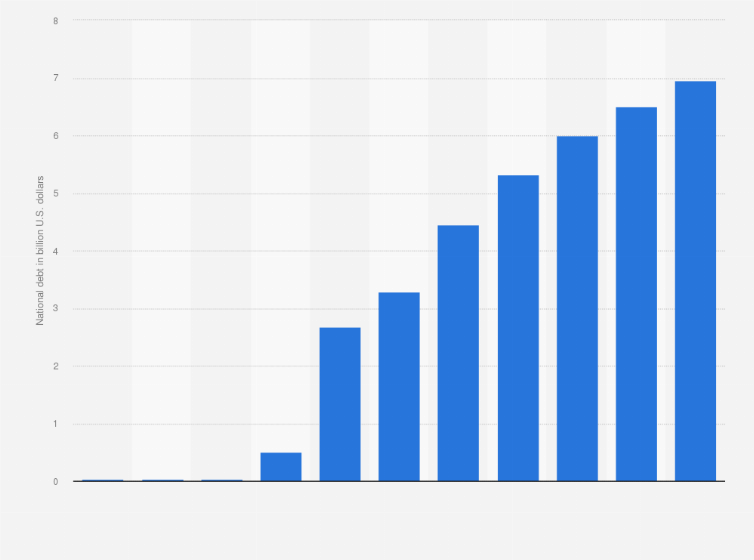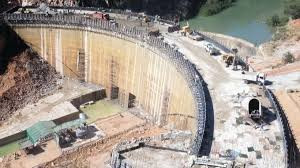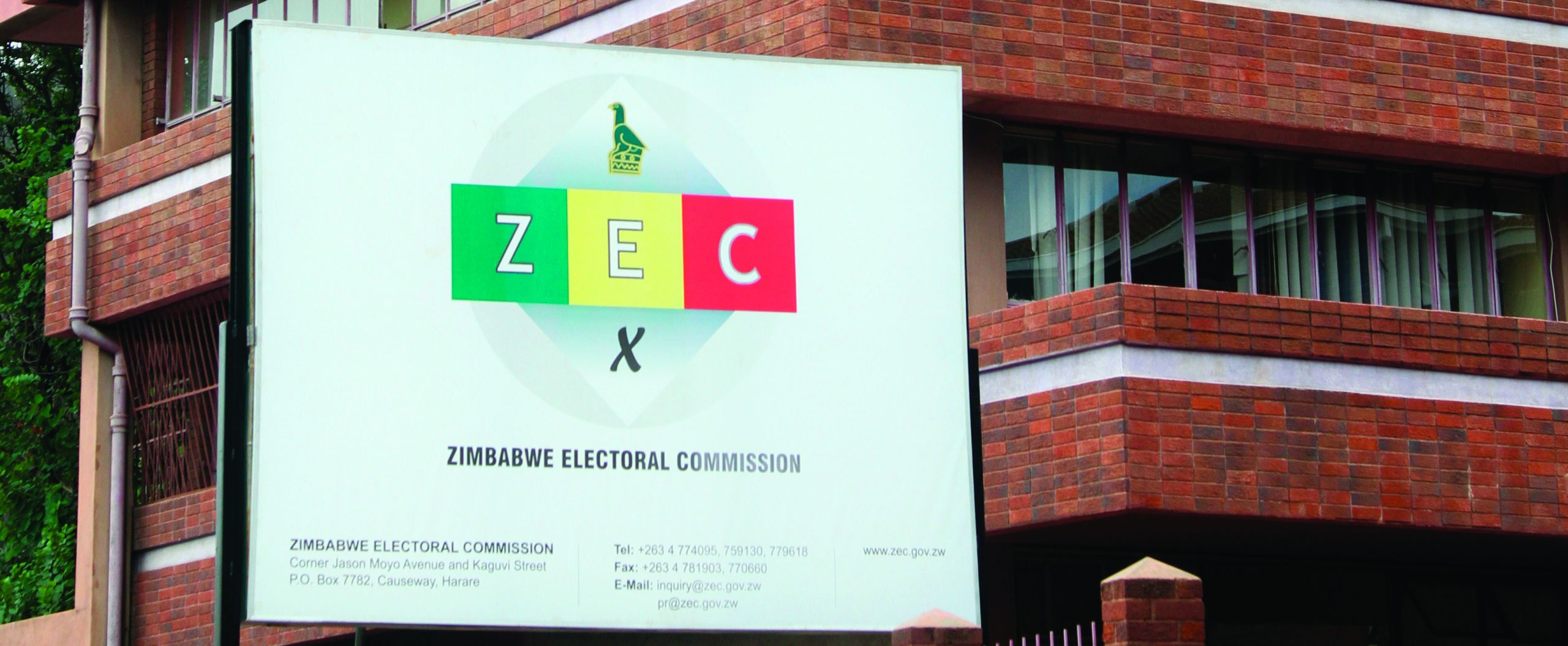
By Pepukai Chivore
The minister of Finance and Economic Development Mthuli Ncube tabled, along with the 2022 National Budget, a Statement of Public Debt in Parliament on 25 November 2021. The statement which indicates that Zimbabwe’s total Public and Publicly Guaranteed (PPG) (external and domestic) debt is estimated at US$13.722 billion as at end September 2021. The minister, however, deliberately avoided expressing the national debt as a percentage of GDP. Of this debt, public external debt amounts to US$13.2 billion and domestic debt is US$532 million.
Domestic debt, however, is now insignificant, having registered a sharp growth between 2009 and 2019 due to large fiscal deficits. The 2019 currency conversion and high inflation have significantly eroded its real value. The RBZ Debt assumption Bill in 2015 had resulted in the sharp rise in domestic debt from US$1.676 billion in 2014 to US$2.239 billion in 2015. The US$495 million Ziscosteel debt in 2018 also contributed to this sharp rise, and so was the creation of the Zimbabwe Asset Management Company (Zamco) to mop up non-performing loans at banks. As of June 2018, Zamco had acquired US$997 million Non-Performing Loans (NPL). During the presentation of the 2019 national budget, however, Ncube announced a government decision to stop further acquisitions of non-performing loans through Zamco.
Assuming a GDP growth of 7.4% as anticipated in the national budget, the current debt level would be above 86% of GDP. This is in stark contrast to one of the ten macroeconomic objectives for the five-year period of the first National Development Strategy (NDS1 2021-2025)) as outlined on paragraph 14 of the NDS wherein there is an undertaking for Zimbabwe to maintain PPG external and domestic debt to GDP at below 70%. This NDS target is in compliance to the provisions of the Public Debt Management Act which caps PPG debt to a maximum of 70% of GDP. This cap can only be exceeded through a resolution of the National Assembly under one or more of the following conditions:
- Occurrence of natural disasters or other emergencies requiring exceptional expenditure;
- Large investment project in the public sector deemed by Cabinet to be timely and prudent; and
In case of a general economic slow-down requiring fiscal and monetary stimulus;
The debt has been ballooning at unprecedented levels, having registered a 28% growth from US$10.7 billion as at end of December 2020 (72.1% of GDP) and a 32.1% growth from US$8.1 billion (84% of GDP) as at end December 2019. As much as 47.9% of the outstanding debt represents arrears to multilateral institutions, down from 74% as at December 2020. The US$13.722 total PPG debt as at the end of September 2021 comprises of US$13.19 billion external debt (96 % of total debt), wherein RBZ debt is US$5.081 billion (37 % of total PPG debt) and US$532 million (3.9 % of total PPG debt) is domestic debt.
Of the US$13.3 billion total public external debt, US$5.4 billion is owed to bilateral creditors, US$2.7 billion to multilateral creditors, US$221 million to creditors under the 2015 RBZ Debt Assumption Act and US$4.9 billion is RBZ’s balance sheet external debt. RBZ balance sheet external debt of US$4.9 billion comprises US$1.4 billion guaranteed debt, US$72 million non-guaranteed debt and US$3.3 billion blocked funds. The 142% increase in the RBZ external debt from US$3.1 billion (20% of the total PPG debt) as of December 2020 to US$5.081 billion (37 % of total PPG debt) is largely on account of the incorporation of the blocked funds in the PPG. Excluding the RBZ debt, total external public debt is US$8.11 billion, a decrease from US$8.4 billion, in 2020.
Blocked funds emanated from the negative effects of government policies (Continued use of uneconomic exchange rates which were far below the equilibrium). This follows currency reforms entailing moving from the multi-currency to a mono-currency and a flexible exchange rate regime. The shortage of foreign exchange against the local currency equivalent at the time of the implementation of these reforms resulted in several outstanding foreign payments for goods and services, as well as dividend remittances. The country could therefore not meet the demand for foreign currency, hence the accumulation of foreign payments, leading to the blocked funds/legacy debts. The blocked funds are estimated at US$ 3.3 billion comprised of RBZ Blocked Funds of US$836.6 million (agreements/contracts/commitments on fuel, grain, airlines and others); and Private Sector Blocked Funds of US$2.5 billion.
- Chamisa under fire over US$120K donation
- Mavhunga puts DeMbare into Chibuku quarterfinals
- Pension funds bet on Cabora Bassa oilfields
- Councils defy govt fire tender directive
Keep Reading
It is important for readers to note that government signed a US$3.5 billion Global Compensation Deed for the compensation of former farm owners in 2020 and this amount will be part of the total debt when the former farm owners sign a cession agreement. This will take the debt figure to US$ 17.2 billion, which is way above 100% of GDP given the fact that government committed to pay as compensation to former commercial farmers displaced during the fast-track land re-distribution programme. Government is expected to borrow the US$3.5 billion by issuing a long-term debt instrument of 30 years’ maturity in the international capital markets. Hold on, there is another contingent liability arising from the arbitral award of 2009 International Center for Settlement of Investment Disputes (ICSID), a World Bank affiliate, which requires the government to pay €8.22 million plus interest to claimants whose land was expropriated, and no compensation was paid. The award remains unpaid and ICSID has periodically reminded Zimbabwe of this obligation. In July 2015, in another case of debt owed by government ICSID awarded the Bernhard von Pezold family the return of their property in the east of the country and full payment of legal costs and interest by the state. The government also had the option to pay the family US$195 million in damages. Government sought to annul the award the same year and in 2018, but lost both cases. The award is yet to paid.
The poor recovery rate from the National Enhanced Agriculture Productivity Scheme (NEAPS) where the following is noted is also a pointer to the growing contingent liabilities as the Government was the guarantor:
- CBZ Agro yield (maize farmers) 0.6% recovery rate-ZWL$76.8 million and 50% guarantee;
- CBZ Agro yield (maize farmers) 22% recovery rate-ZWL$21.7 billion and 80% guarantee;
- CBZ Agro yield (wheat farmers) 77% recovery rate-ZWL$1.57 billion and 100% guarantee; and
- CBZ Agro yield (soyabean farmers) 13.3% recovery rate-ZWL$1.5 billion and 80% guarantee.
Zimbabwe’s debt stress can be traced back to the year 2000, famed for the fast-track but necessary land reform programme, where the country first defaulted on its external obligations to the International Financial Institutions (IFS). A combination of high debt service obligations, fiscal deficits, stunted growth and constrained access to new external financing in the 1990s culminated in a net outflow of resources from the country, with the consequence of default by 2000. The situation was exacerbated by an economic crisis that was triggered by contestations that accompanied the land reform programme that was upscaled in 2000. USA crafted the Zimbabwe Democracy and Economic Recovery Act (Zidera) in retaliation to repossession of land from the 6 000 white minority farmers who owned more than 70% of the productive land as the European Union also imposed restrictions on the country. This was further compounded by the quasi-fiscal operations and monetization of deficits and this plunged the economy into record breaking hyperinflation levels. These prolonged fiscal and quasi-fiscal deficits, which were largely financed by printing money, triggered hyperinflation and macroeconomic disequilibria.
Ironically, Zimbabwe is reported to have inherited about US$700 million of debt from the Rhodesian government in 1980 which mainly emanated from the United Nations sanction-busting loans to the white regime to buy arms during the civil war.
Multilateral institutions, notably the IMF, World Bank and the African Development Bank (AfDB) as well as other traditional creditors from the Paris Club have classified the country as ineligible for new loans. As such, Zimbabwe had been relying on semi concessional financing mainly from China. The lack of access to long-term capital has militating against the country’s growth efforts.
Zimbabwe faces both a solvency, liquidity and vulnerability problem in the short to medium term hence should seek a combination of debt restructuring and write-offs to solve its arrears problem. As such, Government should accelerate reengagement efforts culminating in a debt reconciliation with creditors, for possible debt rescheduling, write off and restructuring while the country pursues domestic resource mobilisation to make token payments.
- *Pepukai Chivore is an economist based in Harare. He is an expert in Public Finance Management – Parliamentary Budget Office and writes in his own capacity.
- These weekly Insights articles published in the Standard Newspaper are coordinated by Lovemore Kadenge, an independent consultant, past president of the Zimbabwe Economics Society (ZES) and past president of the Chartered Governance and Accountancy Institute in Zimbabwe (CGI Zimbabwe).
- Email: kadenge.zes@gmail.com and mobile No. +263 772 382 852










